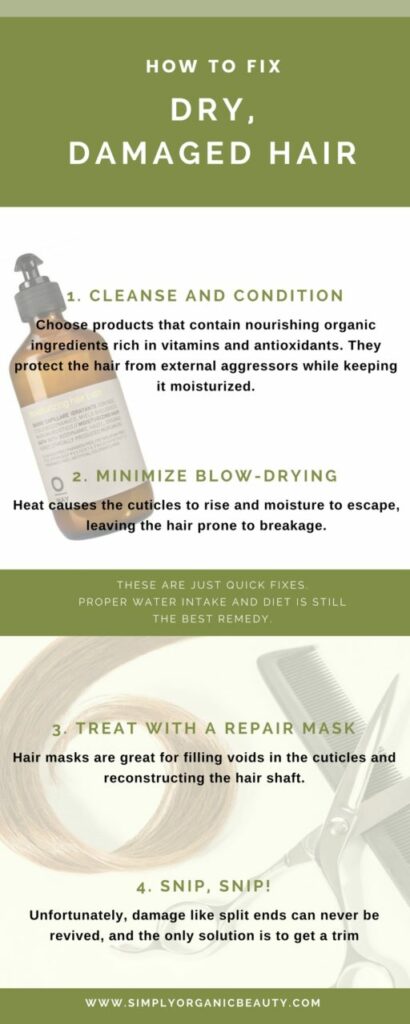As the weather gets colder, many of our clients would come into our salon with dry, damaged hair. When the temperature starts to drop, the humidity in the air decreases as well. This leads to frizzy, dry hair – and eventually, damaged locks. While we cannot do anything about the humidity, there are a few quick-and-easy fixes we can suggest to them to protect their hair from dehydration and damage.
Ways to Prevent Dry, Damaged Hair
Cleanse and Condition

We do these regularly, but the secret lies in the ingredients of the shampoo and conditioner we’re using. Are they using sulfate-free products? Are they filled with synthetic chemicals that strip the hair of its natural oils?
The best way to maintain the balance of moisture in the hair is to use shampoos and conditioners containing zero sodium laureth sulfate (SLS). SLS wash away even the natural proteins and oils that keep our hair healthy and moisturized. Furthermore, SLS contain an anionic charge that causes frizz and flyaways, and further dehydration.
Pick products that contain nourishing organic ingredients such as MuruMuru Butter, Honey, Macadamia Oil, and Citrus Oil. These ingredients contain rich amounts of vitamins and antioxidants that protect the hair from external aggressors while keeping it moisturized. You can find these ingredients in Oway Moisturizing Hair Bath and Conditioner.
Minimize Blow-drying
The cold temperature is already very damaging to the hair, and using heat styling tools can only worsen it. Heat causes the cuticles to rise and moisture to escape, leaving the hair prone to breakage. We highly recommend air-drying the hair instead. But if it’s really necessary, make sure to use a heat protectant before styling.
Treat with a Repair Mask
Let’s be real. Most of us only use deep-conditioning treatments like repair masks as last resort when it comes to hair care, thinking our daily conditioner offers the same benefits as masks do. But unlike conditioners, hair masks penetrate the cortex of hair fiber instead of simply resting on the shaft.
Masks that contain extracts from hazelnuts and macadamia, like Oway Moisturizing Hair Mask, are great for filling voids in the cuticles and reconstructing the hair shaft due to their high fatty acid and nutrient composition. Leaving them on for a good 15 minutes and doing this at least once a week will help restore moisture to the hair.
Snip, Snip!
Unfortunately, damage like split ends can never be revived, and the only solution is to get a trim. If your client is not into the whole pixie cut and bob trend, a nice trim with layers will help give the hair more body and volume. Follow with a lightweight leave-in serum to make the hair easier to comb and style.
But of course, all these fixes only work temporarily if they are not taking care of their health. Everything we put in our body is absorbed by the hair. During the consultation, ask your client’s water, vitamin and mineral nutrient intake. A diet rich in proteins and essential fatty acids like Omega-3 can help get their hair on the road to recovery.
Do you follow a specific hair care regimen during fall and winter? Share them below!





